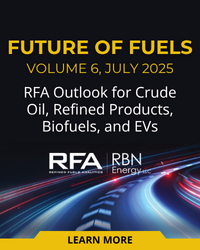The energy market has been in chaos for some time. Even before Russia’s horrific attack on Ukraine, the multinational push to decarbonize the global economy was slow-motion-crashing into reality. Of course, global supply shortages only got worse following the invasion and the widespread response to it. The disruptions highlight the critical need for a balanced energy policy, both in the U.S. and abroad. This became evident in Europe last year, when a heavy, early reliance on renewable energy, largely wind, left much of the continent short on fuel and scrambling for natural gas when the wind didn’t blow enough. The overall supply-demand balance caused prices to rise steadily as the global economy climbed out of its COVID-induced recession. Then the situation became more dire as embargoes on Russian crude oil and gas were planned and implemented. In the U.S., the Biden administration, eager to both “green” the economy and keep gasoline prices in check, has been giving mixed signals to E&Ps and their investors, telling them to both ramp up investments in production and expect to play a smaller and smaller role going forward. It’s a confusing world. In today’s RBN blog, we look at the current energy environment, the policy roller-coaster, challenges to the increased usage of renewables that remain unaddressed, and how the politics of decarbonization are making the ongoing energy transition a very difficult row to hoe.
The hostility toward crude oil and natural gas production and the development of supporting infrastructure seems to permeate much of our society. In popular entertainment, “He’s into fracking” is a major condemnation — more or less a punchline. Many institutional investors have invoked corporate policies against investing in oil and gas. As a candidate, President Biden said that “oil companies will be phased out.” He almost immediately backtracked to indicate that he was simply talking about tax benefits, etc. However, on his first day in office he famously put the kibosh on Keystone XL. His administration then announced a 30-year plan to electrify America and laid out plans to build out renewable energy generation resources to dominate the energy economy. The administration also suspended new drilling leases on federal lands. And government agencies, including the Federal Energy Regulatory Commission (FERC) — with assists from a few federal appellate court rulings — made it increasingly difficult to build needed energy infrastructure.
As noted, energy consumption worldwide has ramped up quickly as the world climbed out of its COVID-induced recession, but without a simultaneous acceleration in crude oil and natural gas supplies and development (see What’s Going On?) the very predictable result took place: oil, gas, NGL and gasoline prices climbed to problematic levels (before spiking higher with Russia’s invasion). This not only made it painful to fill up a car or SUV but has stimulated inflation for everything — all the stuff based on oil or natural gas feedstocks, such as asphalt, plastics and fertilizer, as well as all the things transported by ship, train and/or truck. (And yes, that includes pretty much everything.) Voters don’t like high prices, so there was an immediate political reaction — at least for now, the Biden administration has softened its view on new drilling. In an attempt to show that it was trying to ease the impact on consumers, it did several things. First, it reopened some leasing on federal land. On April 15 a new oil and gas onshore lease sale was announced (including a 50% increase in the government’s royalty rate, the first such hike since the rates were established in the 1920s). The president also called on U.S. producers to drill more while, at the same time, announcing 1 million barrels a day of crude to be released from the Strategic Petroleum Reserve (see I Want to Break Free). Third, he asked countries on which we would rather not rely to produce more oil.
Join Backstage Pass to Read Full Article









